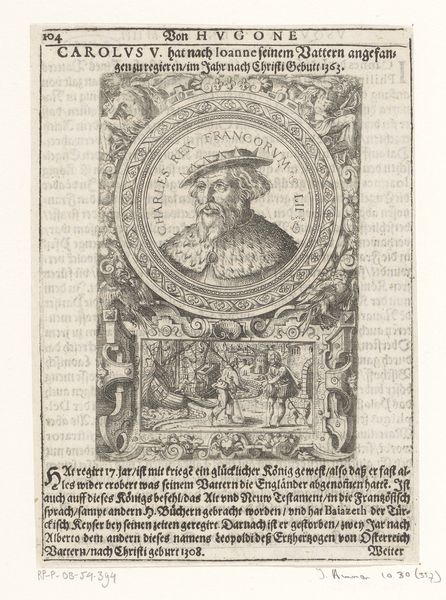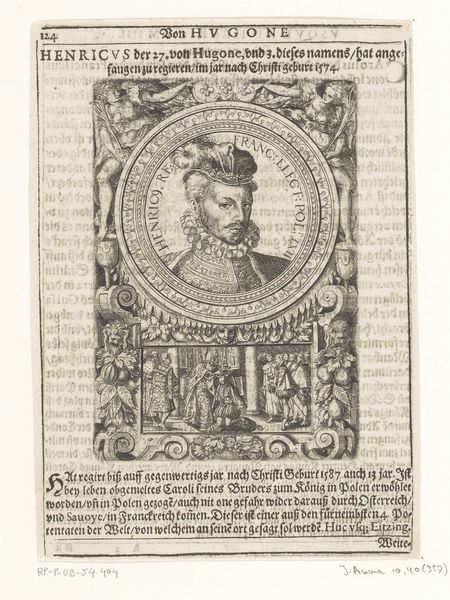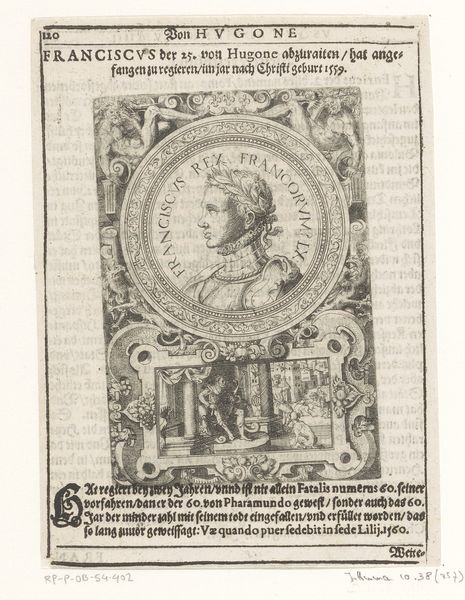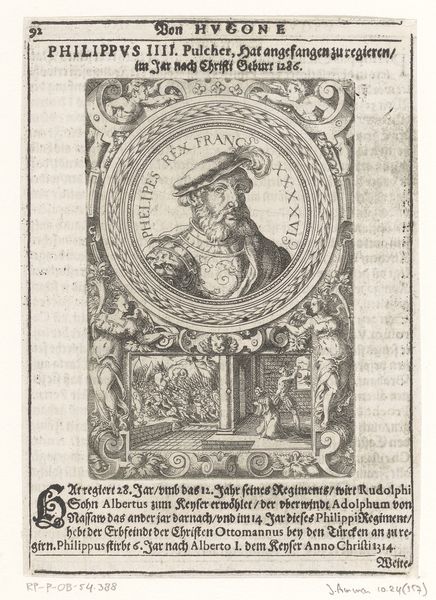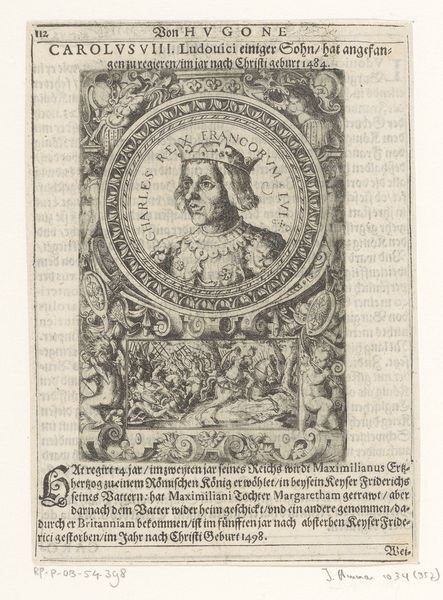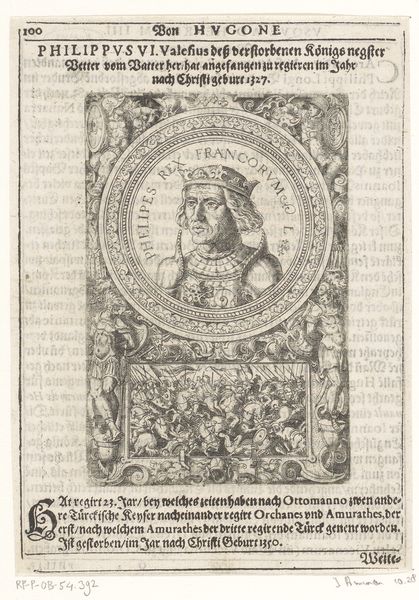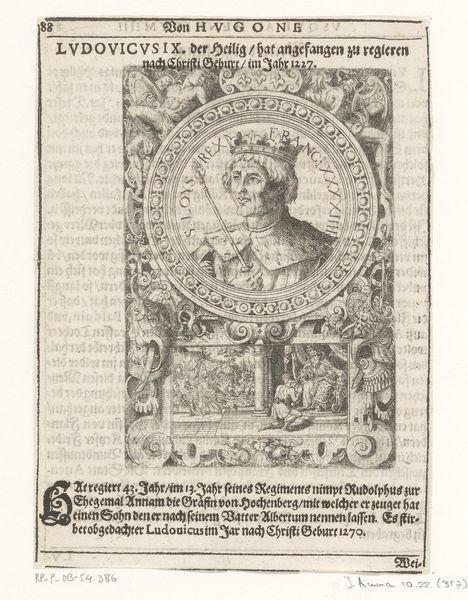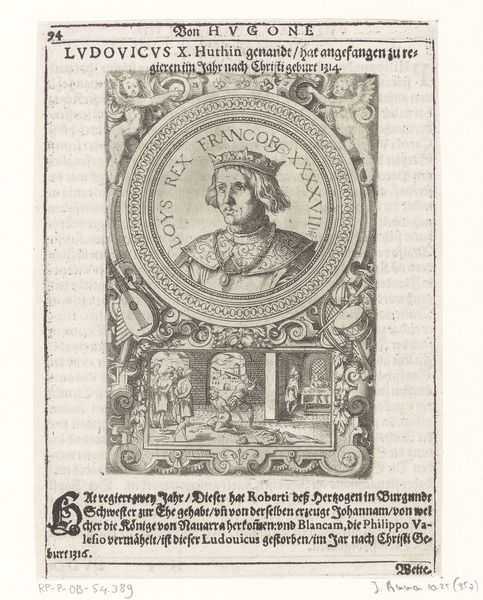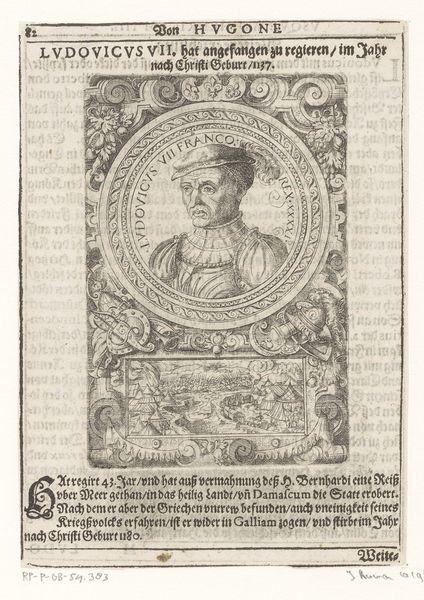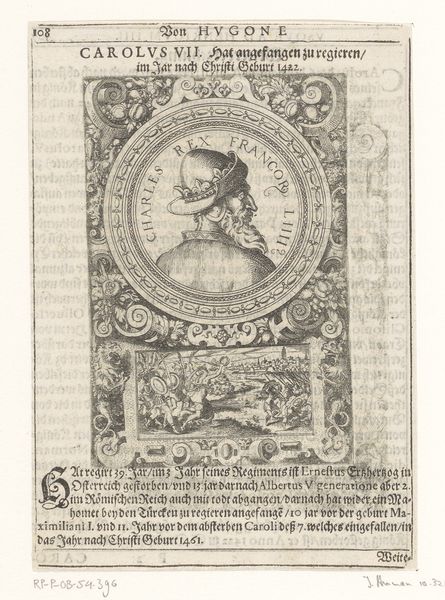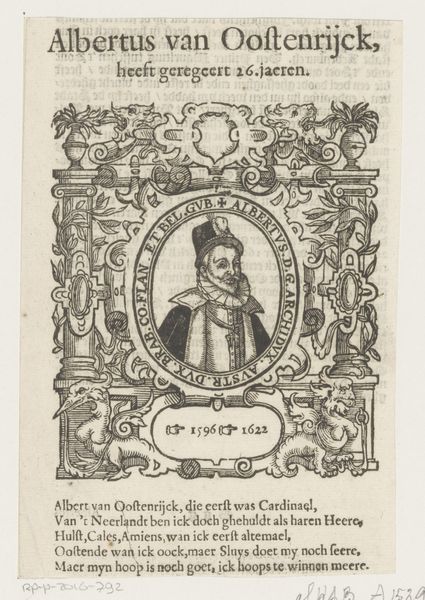
print, engraving
#
portrait
# print
#
pen illustration
#
old engraving style
#
history-painting
#
northern-renaissance
#
engraving
Dimensions: height 116 mm, width 78 mm
Copyright: Rijks Museum: Open Domain
This is Jost Amman’s 16th-century engraving of Henry II of France, now in the Rijksmuseum. This print is more than just a portrait; it’s a carefully constructed piece of political messaging. Consider the visual codes at play. The circular frame around Henry’s profile evokes classical Roman portraiture, associating him with the power and authority of the Roman emperors. The laurel wreath is another nod to classical antiquity, a symbol of victory and imperial rule. Below the portrait, a scene unfolds, perhaps alluding to a significant event in Henry's reign. Prints like this circulated widely in 16th-century Europe. They were tools for shaping public perception of rulers and events, functioning almost like early forms of propaganda. To truly understand this image, we need to delve into the history books, consult archives, and examine other visual materials from the period. Only then can we fully grasp its meaning and impact.
Comments
No comments
Be the first to comment and join the conversation on the ultimate creative platform.
